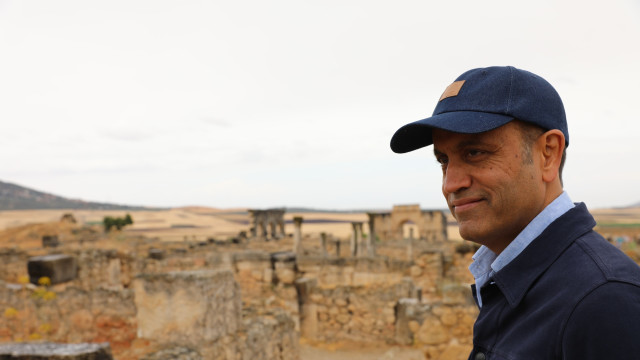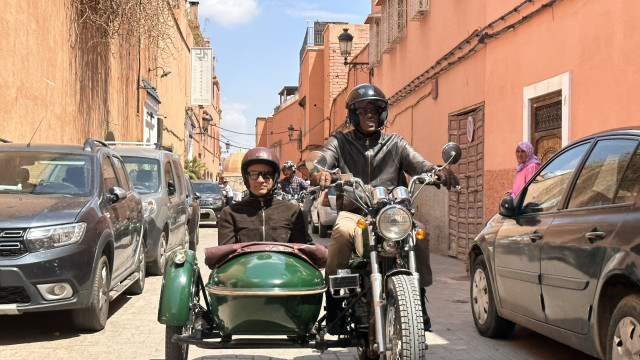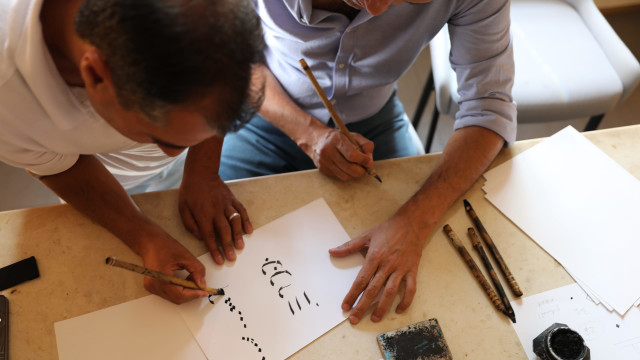Morocco Moments: Medina, Cuisine, Craft & the Art of Happiness

My personal odyssey in Morocco began with a three-day sojourn in Fes, a city founded in the 9th century, that pulsates with antiquated charm and modern mercantile bustle. The effect is seductive. While India boasts of its own noisy bazaars, the Moroccan medina has a distinct personality. What struck me the most was the genuine warmth and hospitality of the shopkeepers. They didn't push their wares aggressively; instead, they welcomed you to taste the olives, sample the spices, and engage in unhurried conversations.
The Taste of Morocco
One of the highlights of my time in Fes was a cooking class at the Palais Amani hotel. It let me immerse myself in the zesty culinary culture of Morocco. I was back at the medina to shop for ingredients before the class, and there, in a small space selling soup, we witnessed a master at work. He prepared a delicious fava bean soup called Bisarra. It’s a simple, hearty soup of boiled beans mashed until they form a thick purée. The soup was served with chile powder and cumin shaken on top, a drizzle of fresh olive oil, and a dollop of minced fresh garlic. It was a scrumptious start to the day and the culinary class, as I procured onions, zucchini, and olives, and headed back to the hotel.


But not before another stop at a tea stall! The medina is full of surprises. I found a tea maestro in action. He effortlessly blended different herbs and concocted innumerable cups of fresh mint tea in a jiffy. It was a refreshing herbal tea made served with a dash of sugar. It was a moment of appreciation for the artistry that goes into even the simplest of pleasures.
Back at the cooking class, under the expert guidance of Chef Oussama, I learned to make a vegetable tagine with zaalouk, a wonderful side dish of roasted eggplant in a spicy sauce. Dessert was a simple plate of sliced fresh fruit with a little orange flower water sprinkled on top, another delightful Moroccan custom.
Exploring Moroccan Craft
For the next few days in Fes, I found myself captivated by the mastery of Moroccan artisans. A shop I visited showcased an array of exquisite works, each with a story behind it. From intricately designed shields to delicately wrought lanterns, the metalwork left me spellbound. But it was the Berber carpets that stole my heart. The Berber are descendants of the pre-Arab inhabitants of North Africa with a distinct approach to craft. The simple yet elegant designs were hard to resist, and I purchased quite a few pieces. It is important to be mindful of supporting local artisans and giving back to the community. Buying these exquisitely handwoven carpets is like taking a piece of vibrant history back home alongside memories.
One cannot resist the beauty of Morocco’s signature craft of ceramics. Moroccan pottery showcases Islamic design with elegant patterns.


I got to witness the process of how simple clay plates are transformed into magnificent works of art at a cooperative where local artisans produce exquisite pottery for design and utility. Their wares, intricately designed tagines, vases, plates, and sauce bowls preserve Morocco's ancient art forms with Arabic, Berber, North African and European influences.
Exploring Spiritual Wellbeing
No journey to Morocco is complete without delving into the spiritual world of Sufism. In the medina at Fes, I met a Sufi scholar who graciously espoused its tenets. Sufism is a mystical and contemplative branch of Islam that emphasizes spiritual awakening, inner illumination, and the pursuit of divine love and knowledge. He introduced me to a musical performance by a group of Sufi singers. Sufi music is considered a way to reach the divine. The Sufi chanting in soulful voices accompanied by rhythmic movements, and trance dance espoused a divine ecstasy.
After my eventful stay in Fes, the next leg of my journey took me to the Sahara Desert where I met with Zouhair Haznaoui, a storyteller and musician. He brought a bag of artifacts to our camp in the middle of the Sahara. He got horns, a figurine, bracelets, a lamp, and more. He had me choose an object, and then he narrated a story associated with it. His stories featured many characters, and lots of exciting plot twists — I was amazed that he could remember them all! These are ancient tales, full of mythical people and creatures, rich with symbolism and moral wisdom.


While in the desert, I was also privileged to attend a performance of Gnawa music, one of Morocco’s most compelling musical traditions. The Gnawa people are descended from enslaved West Africans, mostly from the Sahel region. Though they are members of the Sufi order, Gnawa people still retain some of the animist beliefs and practices that predate Islam; their musical ceremonies, called lilas, often last all night!
There was much more that I witnessed in my trip to Morocco, but it was the vibrant medinas, tantalizing cuisine, exquisite craftsmanship, and profound spirituality, that I will remember for a long time, in this transformative journey that helped me cultivate insight and wisdom and uplifted my spiritual wellbeing.



